ALEXIS PYE: EXPLORING THE INTERSECTION OF ART AND IDENTITY
Q&A with UH School of Art painting graduate
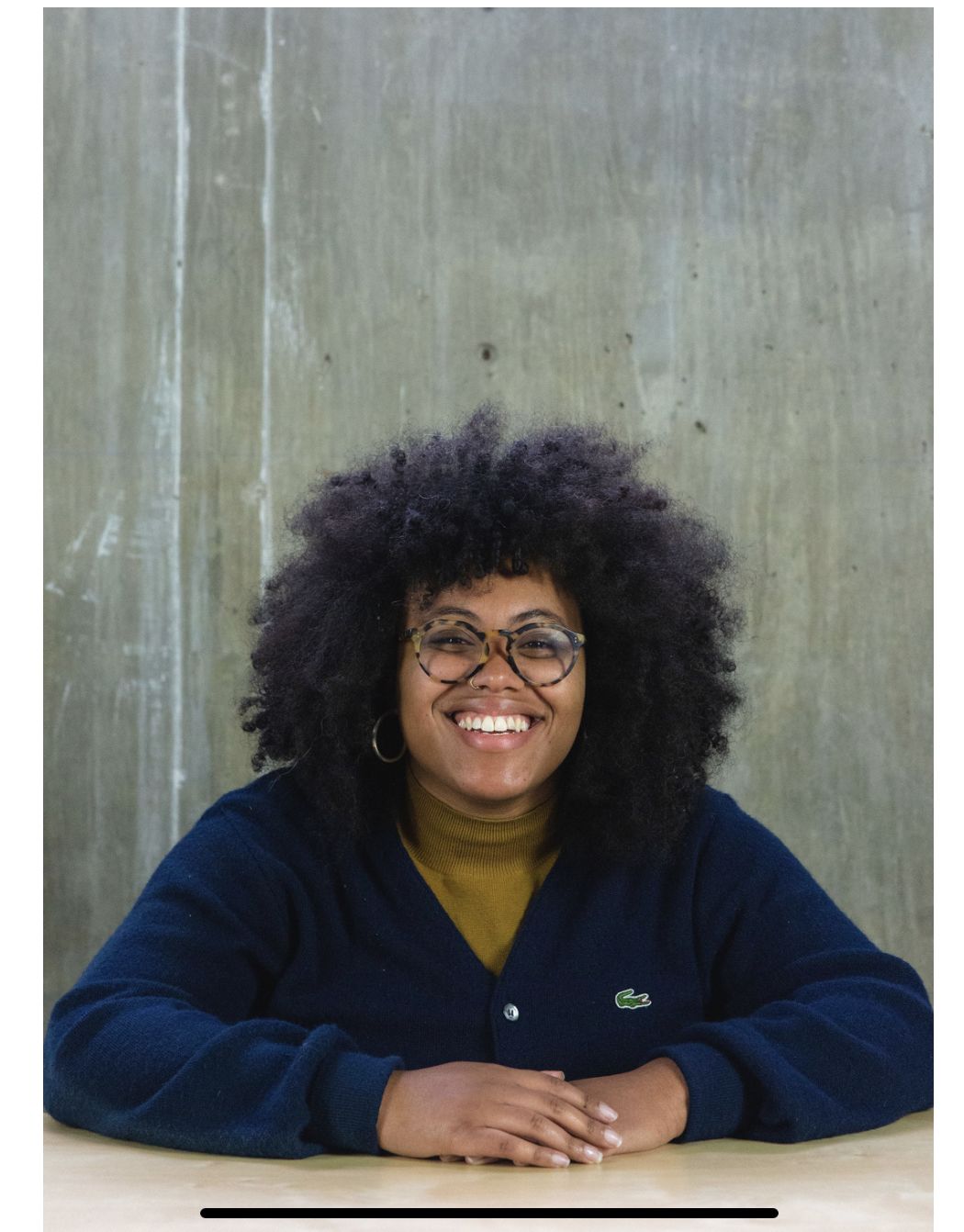
Alexis Pye, a Houston-based artist and University of Houston School of Art alumna, graduated with her Bachelor of Fine Arts in Painting in 2018. Since then, she has continued to live, work, and thrive in Houston, where she is represented by and shows frequently at Inman Gallery.
She won the Jurors’ Choice Prize at the 20th Annual Citywide African American Artists Exhibition and has also exhibited work at the Community Artists Collective, David Shelton Gallery, Museum of Fine Arts Houston, and Contemporary Arts Center Houston to name a few.
In 2022 she participated in the Houston Rockets x CAMH exhibition at the Contemporary Arts Museum Houston, and she is a Round 16 Lawndale Artist Studio Program Participant for the 2022-2023 season, where she will continue to explore the tradition of painting as a way to express the Black body outside of its social constructs.
We caught up with Pye and talked with her about her time at the University of Houston, her artwork, and her career.
Can you tell us about your journey as an artist since graduating with a Bachelor of Fine Arts in Painting in 2018?
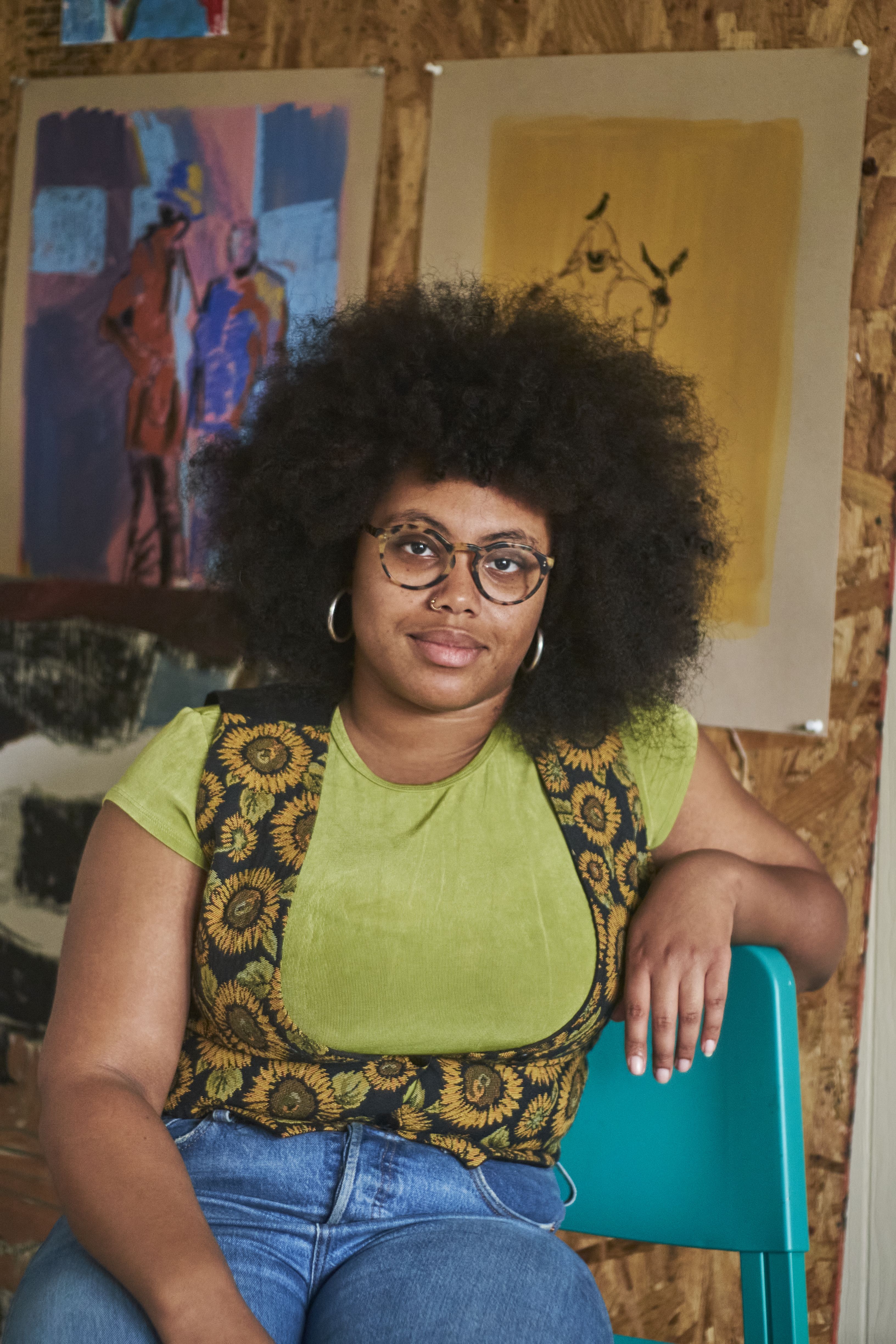
Photo by Jacob Lee Meyers
Photo by Jacob Lee Meyers
One of the most exciting opportunities that came my way after graduating was with Project Row Houses. They invited me to participate in Round 51, which unfortunately coincided with the onset of the pandemic. However, just before that challenging period, I was part of an exhibition called "Everything's Going to Be Alright," curated by Robert Hodge and hosted at David Shelton Gallery. This show featured a diverse collection of talented local Houston artists, many of whom were either graduating or on the brink of starting their professional careers.
As the years progressed, I dedicated myself to my artistic practice, while also undertaking preparatory positions at prominent institutions. I had the opportunity to work at the Contemporary Arts Museum Houston and ventured into preparatory roles at other notable places. Eventually, I found myself appointed as a preparator at the Museum of Fine Arts Houston, where I also had the privilege of engaging in member services. Working in these roles has allowed me to have conversations with influential figures which has been both inspirational and invaluable. Prior to these experiences, I had the honor of interning at the Blaffer Art Museum, which opened doors for me to contribute to the preparatory teams at the Contemporary Arts Museum Houston and the Museum of Fine Arts, Houston.
Being a Summer Studios Residency participant at Project Row Houses during your final year in the painting program, how did that experience impact your artistic practice? Are there any specific projects or artworks that emerged from that residency?
Growing up in Detroit, I've always seen Black people in STEM, and I was always encouraged to go into STEM, but my calling is art, and I didn't see a lot of Black people in art. There’s the Heidelberg Project in Detroit and if your family's not into art that's the only art institution you’re aware of. You don't really hear about the Carr Center; you don't learn about the galleries that they have at The Charles Wright Museum. You’re aware of the mainstream museums and that's it. When I came to Houston and was introduced to Project Row Houses, I could see myself and my family represented. It felt like home, it felt like community.
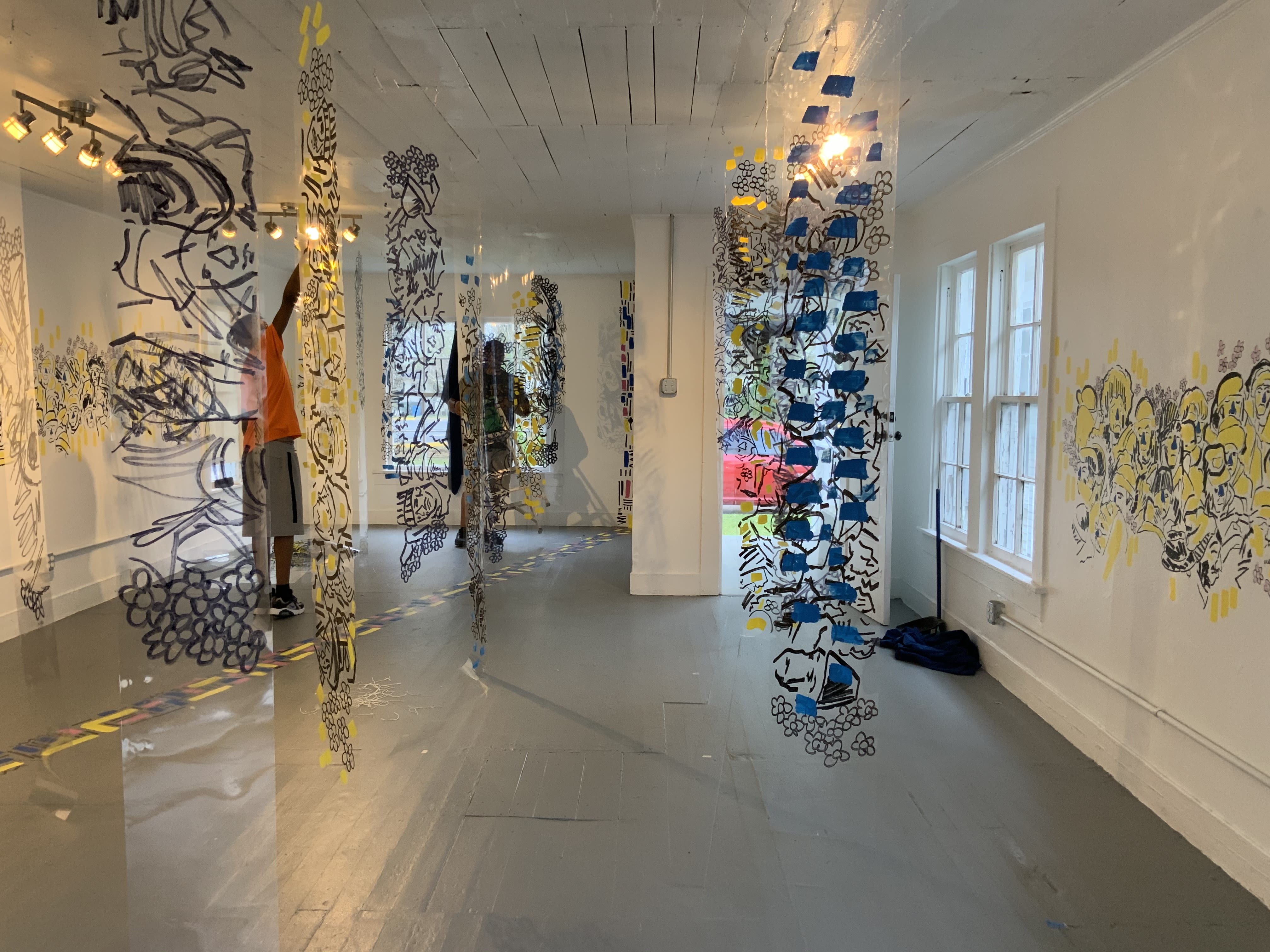
Ambivalence at Project Row Houses, Round 51
Ambivalence at Project Row Houses, Round 51
The house I was a part of was called Breadcrumbs. I explored the idea of music and art and how they’re joined together by inviting friends to do performances there and explored how music and art go hand in hand and what that relationship looks like. It was one of the greatest experiences of my life.
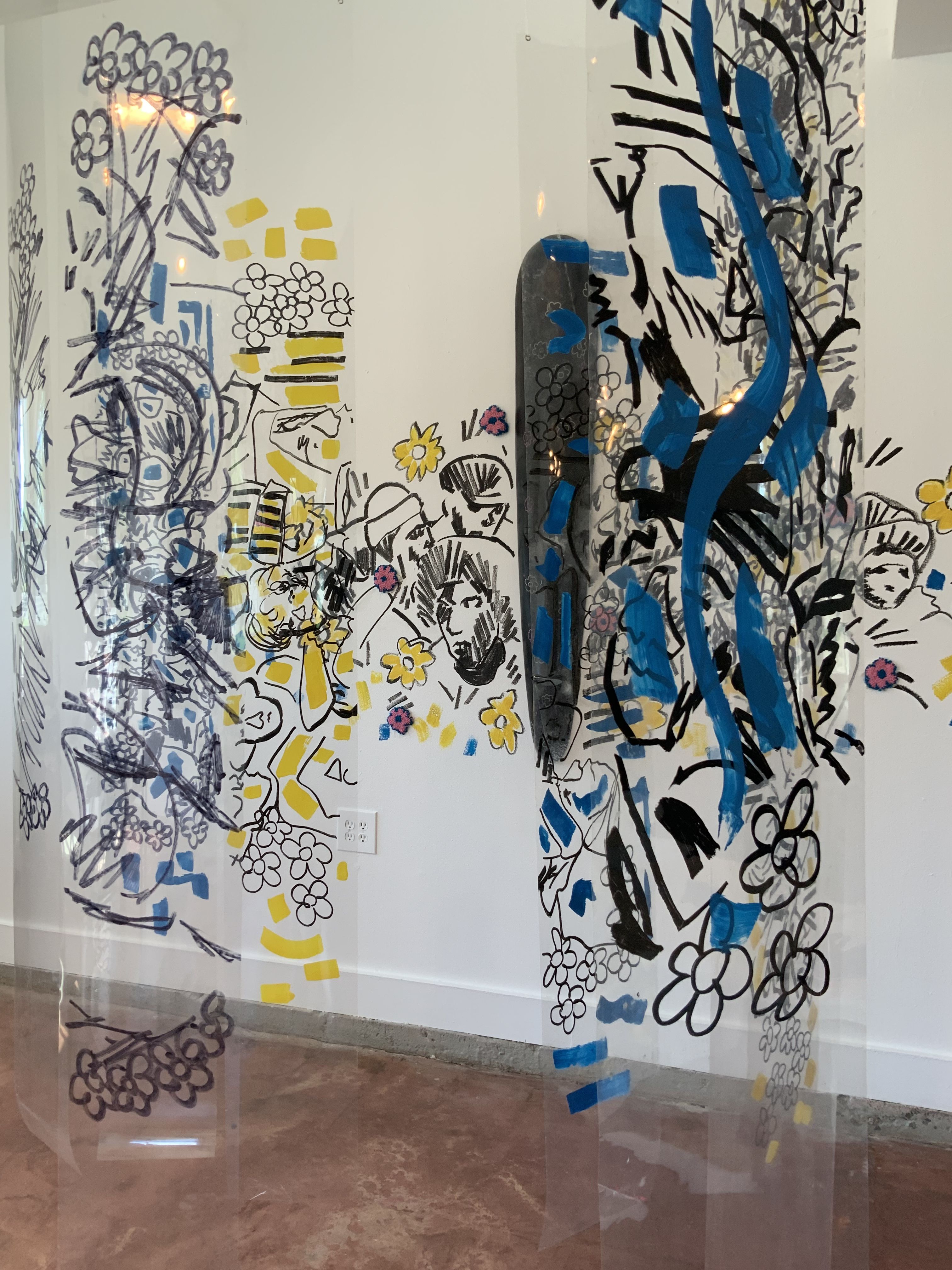
Ambivalence (revisited) at Project Row Houses, Round 51
Ambivalence (revisited) at Project Row Houses, Round 51
Can you tell us about the artwork that received Juror's Choice Prize at the 20th Annual Citywide African American Artists Exhibition at Texas Southern University and its significance to you?
I created that piece towards the end of my time at the University of Houston. Its inspiration stemmed from a painting I stumbled upon while scrolling through Tumblr. The painting depicted a historical trend where individuals would showcase their wealth by bedazzling not only themselves but also child slaves with jewels. This sparked my curiosity and led me to delve into the question of who these individuals truly were. I was also exploring the concept of blacking out the skin, drawing inspiration from artists such as Kerry James Marshall, Annie Lee, and Shirley Woodson. These artists had a way of portraying black individuals in an expressive yet simplified manner, allowing anyone to see themselves within the art. The inclusion of black skin in my work started to emerge in a technical painting style, where I used flat Mars paint to create a distinctly flat appearance for the subjects.
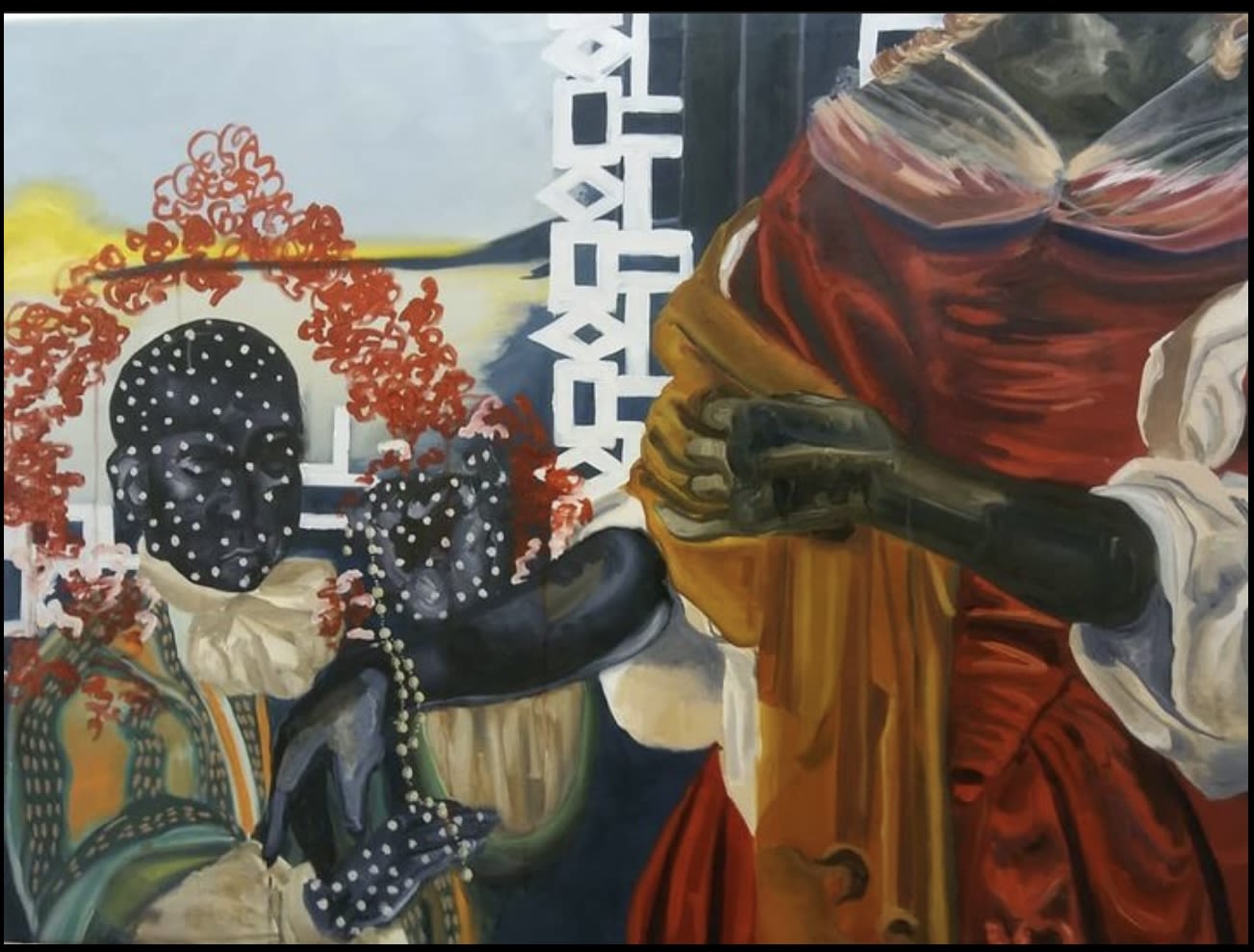
Juror’s Choice Prize for the 20th Annual Citywide African American Artists Exhibition held at Texas Southern University in 2019, selected by Kanitra Fletcher.
Juror’s Choice Prize for the 20th Annual Citywide African American Artists Exhibition held at Texas Southern University in 2019, selected by Kanitra Fletcher.
Winning the Juror's Choice Prize opened the door to a scholarship at Glassell. This incredible opportunity allowed me to enroll in an intermediate painting class under the guidance of Francesca Fauchs, which subsequently propelled me into the Glassell Block Program. This interdisciplinary program functions like a graduate program for artists, curators, and other creative individuals. It involved receiving critiques on my work, which greatly prepared me for the career that I am currently assembling. After completing a year at Glassell, I was fortunate enough to be accepted into the Lawndale Artist Studio Program.
As a Round 16 Lawndale Artist Studio Program Participant for the 2022-2023 season, what are your expectations and goals for the program? How do you plan to explore the tradition of painting to express the Black body outside of its social constructs?
The foundation of my exploration has always been rooted in the garden. I often express my love for being outdoors, but I wouldn't necessarily consider myself a nature enthusiast. I enjoy spending time in parks, but camping and wilderness knowledge eludes me. This dynamic relationship between Black individuals and the stigma of not being "woodsy" is something I find intriguing. It raises questions about how to represent this in-between space, so I experiment with perspective and the interplay between interior and exterior.

Alexis Pye, “You Really Livin”, 2022, Oil, oil stick and oil pastel on masonite panel, 90 x 108 inches. Photo: Ronald L. Jones
Alexis Pye, “You Really Livin”, 2022, Oil, oil stick and oil pastel on masonite panel, 90 x 108 inches. Photo: Ronald L. Jones
One of my works that reflects this exploration is the trapezoid piece from my series, You Really Livin, which delves into the concept of mid-century homes. Growing up in the suburbs of Detroit, I experienced the in-between nature of living. It was neither fully urban nor completely suburban. These homes, constructed in the 1950s in places like Oak Park, were built as cookie-cutter houses with abundant windows and ample natural light. The architects prioritized the seamless integration of indoor and outdoor spaces, transforming these small, standardized houses into open and inviting dwellings. They were sustainable homes for their time, yet they exist in a peculiar middle ground—neither futuristic nor entirely modern. Although they may appear dated now, there is currently a resurgence in the appreciation of mid-century housing. These neighborhoods, once associated with white flight, are now reclaiming their intended purpose as people return to the cities. I find this dynamic fascinating and it’s something I’m continuing to explore within my work.
Can you elaborate on your collaboration with the Houston Rockets x CAMH at the Contemporary Arts Museum Houston in 2022? How did that opportunity come about, and what did it mean to you as an artist?
Phillip Pyle, II, a Master of Fine Arts candidate at the University of Houston and a basketball enthusiast, unexpectedly reached out to me while he was working at the Contemporary Arts Museum Houston (CAMH). Pyle asked if I was into basketball and I responded affirmatively, mentioning that although I hadn't kept up with the sport recently, I had been heavily invested in basketball during my early teens, especially during the rise of the Detroit Pistons. As a kid, I played basketball to some extent, so I deeply appreciated and understood the sport and its cultural significance, particularly for inner-city kids like me.
In celebration of the 75th anniversary of the National Basketball Association (NBA), CAMH partnered with the Houston Rockets to commission eleven limited-edition posters for the team’s Remix Night games during their 2021–2022 season. With each game honoring a different Rockets legend, a local artist with an interest in basketball was chosen to create original artwork for the corresponding Remix Night.
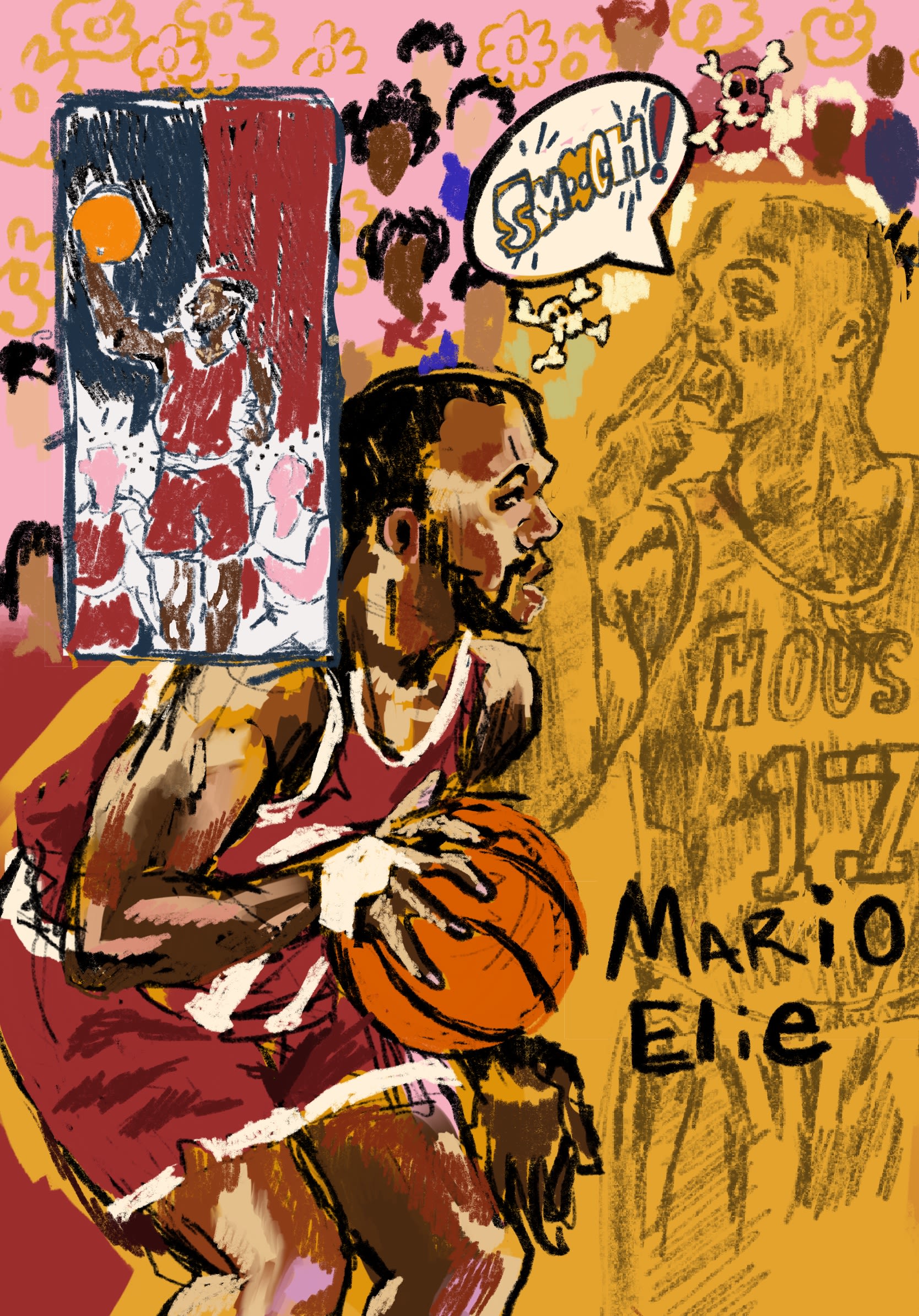
Mario Eli poster by Alexis Pye for CAMH X Houston Rockets
Mario Eli poster by Alexis Pye for CAMH X Houston Rockets
Pyle paired me with Mario Elie. I immediately searched for his highlights and discovered that he was known as "The Kiss of Death." The nickname resonated with me and seemed perfect for what I enjoy exploring in my paintings, as it represented a combination of the masculine and the feminine.
I had the privilege of meeting Mario Elie in person, and he was incredibly kind and receptive to the artwork. This opportunity was truly remarkable, as it allowed my family to witness the fusion of my art with basketball — a world they’re more familiar with. It was a chance to engage in a realm that I had always respected and aspired to participate in.
Are there any specific artists or art movements that have had a significant influence on your work? How have they shaped your artistic style and concepts?
I have a deep admiration for turn-of-the-century paintings, particularly those associated with Viennese movements like the works of Gustav Klimt and the Arts and Crafts movement led by William Morris and Wiener Werkstätte.
It was through encountering the art of Toyin Odutola that I realized the immense freedom of imagination in creating art. Odutola's approach of inventing narratives rather than relying solely on real-life references opened a world of possibilities for me. Her work takes viewers on a captivating adventure, and I aspired to embark on a similar artistic journey.
Rather than constructing fully fleshed-out stories, I aim to offer glimpses or visions through my art. This concept was reinforced by a statement made by Toni Morrison in a documentary. Morrison revealed that she created her novel "Beloved" by reading a story and intentionally refraining from conducting further research. Instead, she allowed her own imagination to continue the story and fill in the narrative gaps. This approach resonated with me deeply, as I seek to infuse my art with a similar sense of imaginative exploration.
How do you approach the depiction of the Black body in your paintings, and what do you hope to convey through your representations?
My paintings explore a loose landscape of what it means to be Black in the specific context of radical rest. Seemingly antithetical concepts such as cool and warm or naturalistic and abstract coexist in this world; all held together by the black mark. I draw inspiration from a rich variety of sources including anime, family photos, music, literature, and film. The cacophonous source materials that somehow create harmonies on the canvas insist on an understanding of Blackness that eludes restrictive definitions.
What advice would you give to emerging artists who are trying to establish themselves in the art world?
I think many aspiring artists can become disheartened due to a lack of understanding about the level of dedication and networking required. As an inherently shy person, I have realized that to pursue this path, I must overcome my inhibitions. By actively engaging in conversations and putting myself out there, I have witnessed a remarkable boost in my confidence over time. This growth simply necessitates consistent practice.
Additionally, there’s immense value in investing effort and showcasing a strong work ethic within galleries. Those who not only meet expectations but consistently exceed them are truly memorable. By establishing yourself as a reliable and trustworthy individual within the arts community, you open the doors to a multitude of opportunities.
